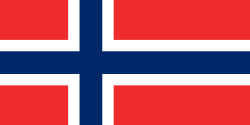See our most recent update to this story: FM in Norway Isn’t Dead, Says Norwegian Local Radio Association
Last Thursday Norway’s Ministry of Culture announced the national transition from analog FM to digital DAB radio beginning on January 11, 2017. This move, akin to the digital television transition the US made in 2009, has been years in the making. At least one major reason for the switch is the stated savings of over 200 million Krones a year by the state NRK broadcaster, equivalent to about US $25 million. That money is planned to be invested in programming.
The Ministry first published a report calling for the end of analog radio in 2011. One of conditions stated in that report was being able to reach more than 90% of the population with a digital signal, equalling the coverage of the national NRK P1 station on FM. Additionally, at least half of all listeners had to listen to a digital station daily by this past January 1. Both of these conditions were met.
There is less analog radio in Norway than in many other European countries, and significantly less than in the US. Many press reports have repeated the Ministry of Culture’s statement that there are only five nationwide FM stations. Because DAB offers capacity for 42 national channels–22 are in use now–the Ministry says there will be more nationwide service.
However, mostly gone unmentioned is that there are dozens of additional local FM stations, many of which are part of the NRK public radio service, that will have to transition. Norway has no medium wave (AM) stations since NRK P1 ended broadcasts on that band in 2006.
Over the last decade other European countries, including the U.K., Germany and France, have entertained proposals to phase out FM, though none has followed through. The U.K. has the most well developed DAB system, with 36.8% of listening hours dedicated to 34 BBC channels and over 200 commercial stations. At the same time, it should be noted that many listeners complain about relatively low sound quality, due to the aging circa–1990 MP2 compression used by DAB. The newer DAB+ standard–used by many Norwegian stations–offers higher fidelity by using the more modern AAC codec.
Norway, therefore, should be considered an outlier in making an all-digital transition, even amongst countries that rolled out digital radio around the same time–some two decades ago. Moreover, this long gestation period for DAB in Norway means the country is not a bellwether for the US, where at best 2 – 3% of listeners tune in a digital radio signal.
Certainly, Norway’s comparatively centralized broadcasting infrastructure, combined with a population 1.5% that of the US, contribute to the ability to make a digital transition. While Norway has to transition maybe a few dozen stations, in the US 15,542 would have to adopt digital–only about 1,900 broadcast HD digital signals now. (In 2009 only about 2,200 US TV stations had to go digital, and they had 13 years advance warning).
Another significant factor is that DAB is a very different standard than HD Radio. DAB uses separate spectrum from FM, and is more efficient to broadcast. In most countries adopting DAB, the incentive to upgrade to DAB receivers was to access new, digital-only stations.
By contrast, HD Radio is broadcast alongside its partner analog FM broadcast, with identical programming as on the main digital channel. While HD offers fidelity-limited HD2 and HD3 channels not necessarily available in analog, most broadcasters in the US have invested little in these digital-only signals, giving listeners very little incentive to go HD. Nearly all the growth in HD receivers is due to automakers integrating the technology into car radios. In Norway and other countries DAB radio receivers of all kinds are widely available, beginning at around US $50. Good luck finding a non-automotive HD receiver in the US that’s not integrated in a thousand dollar A/V receiver.
While FCC Chairman Tom Wheeler recently asked in blog post if the top end of the AM band, 1605 – 1705 KHz, could be carved out for digital-only stations, this is the closest the US is likely to come to digital radio transition plan. Also note that this was just one of several ideas he proposed for utilizing that section of bandwidth. He promises we’ll see a concrete proposal soon.
It will be informative to watch how the digital radio transition unfolds in Norway, especially as listeners make the inevitable mad rush to buy DAB receivers at the close of 2016. Whether broadcasters in any other country–including the US–actually learn anything is another matter.



